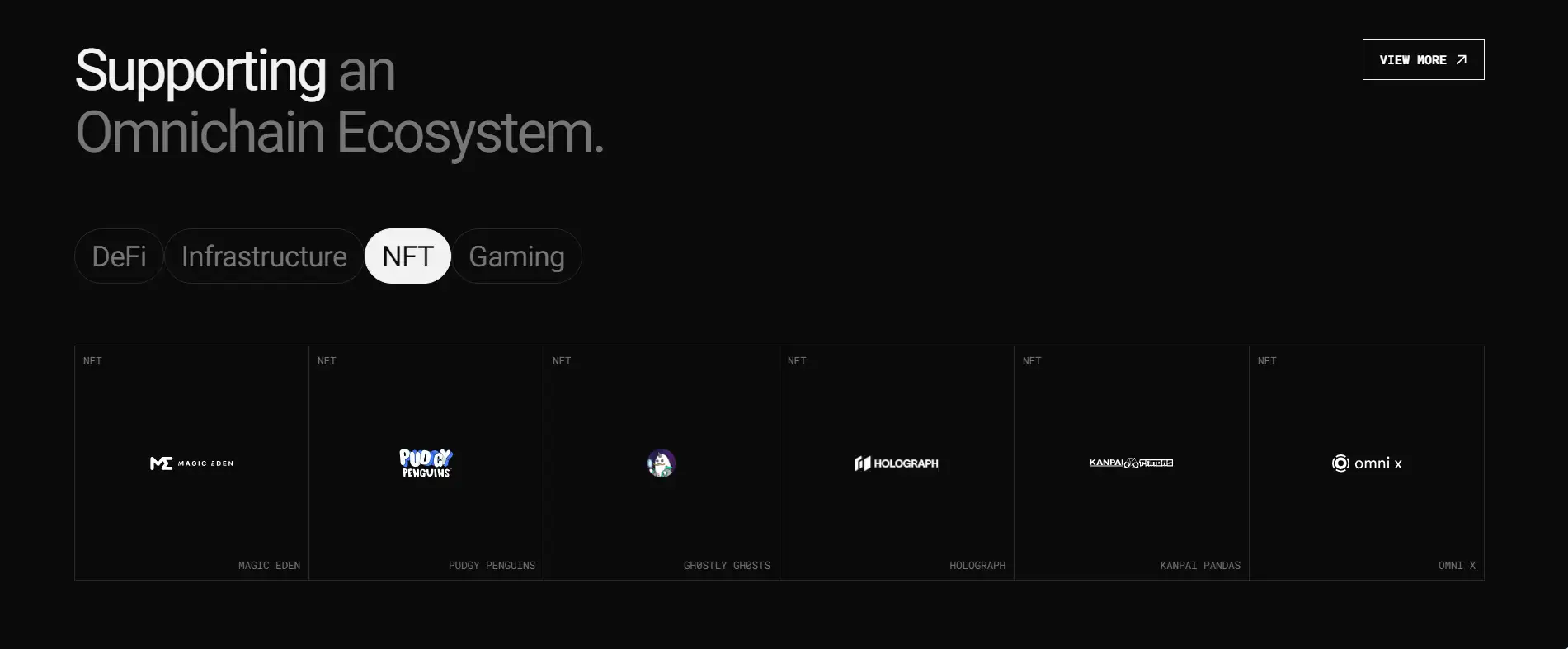About LayerZero
LayerZero is an advanced interoperability protocol that facilitates seamless communication between multiple blockchains. The platform is designed to address the significant challenge of cross-chain connectivity by providing a trustless, efficient, and secure solution for decentralized applications (dApps). By leveraging its innovative architecture, LayerZero allows developers to create scalable and robust applications that interact across various blockchain ecosystems without relying on centralized intermediaries or vulnerable bridge solutions.
The mission of LayerZero is to eliminate the barriers that prevent blockchains from operating cohesively, thereby creating a unified and interconnected decentralized ecosystem. The protocol empowers developers and users with tools to perform cross-chain asset transfers, execute smart contracts across different chains, and enable multi-chain liquidity pools. As blockchain technology continues to grow, LayerZero is emerging as a cornerstone in the industry, facilitating the next wave of decentralized innovation.
LayerZero is a groundbreaking interoperability protocol designed to revolutionize the way blockchains communicate. Launched to address the fragmentation of blockchain ecosystems, LayerZero offers a trustless and decentralized mechanism for seamless cross-chain interactions. The core innovation of the protocol lies in its unique architecture, which combines Relayers and Oracles to validate and transmit data securely across different blockchain networks. This innovative approach eliminates the need for centralized intermediaries, significantly enhancing the security and efficiency of cross-chain transactions.
A key feature of LayerZero is its modular design, which allows developers to easily integrate its functionalities into their projects using the protocol’s user-friendly Application Programming Interface (API). This flexibility has made LayerZero a preferred choice for developers working on a variety of applications, including decentralized exchanges (DEXs), cross-chain lending platforms, and blockchain-based games. The protocol’s lightweight architecture also ensures scalability, making it well-suited to handle the increasing demands of the blockchain ecosystem.
Unlike traditional bridging solutions, which are often prone to vulnerabilities, LayerZero ensures the integrity and security of cross-chain transactions through its decentralized design. Oracles are used to verify the authenticity of data, while Relayers transmit messages across chains. This dual-component system ensures that no single entity has full control, mitigating the risk of exploits or failures.
The impact of LayerZero is evident in its wide adoption across the blockchain industry. Prominent projects like SushiSwap and Stargate leverage the protocol to enhance their cross-chain functionalities. Competitors in the blockchain interoperability space include platforms like Polkadot, Cosmos, and Wanchain. However, LayerZero sets itself apart with its unique trust-minimized design and lightweight infrastructure, making it a leader in the interoperability space. To learn more, visit LayerZero.
LayerZero offers a range of benefits and features that make it a standout solution in the blockchain industry. These include:
- Trustless Cross-Chain Communication: The protocol eliminates centralized intermediaries by utilizing Relayers and Oracles for secure and decentralized message validation across blockchains.
- Scalability: The lightweight and modular architecture of LayerZero allows it to handle high transaction volumes, making it suitable for applications with significant user demand.
- Developer-Friendly API: The platform provides a straightforward API, enabling developers to easily integrate cross-chain functionalities into their decentralized applications.
- Enhanced Security: By decentralizing data validation and transmission, LayerZero minimizes the risk of exploits that are common in traditional bridging solutions.
- Wide Range of Applications: From cross-chain DeFi to multi-chain gaming and asset transfers, LayerZero supports a diverse array of use cases.
- Proven Adoption: Leading projects such as SushiSwap and Stargate utilize LayerZero, demonstrating its effectiveness and reliability.
Getting started with LayerZero is simple and accessible for both developers and users. Here’s a step-by-step guide:
- Visit the Official Website: Start by exploring the platform at LayerZero to familiarize yourself with its features and offerings.
- Access Developer Documentation: Navigate to the documentation section, where you’ll find in-depth guides, APIs, and resources to help you integrate LayerZero into your project.
- Set Up Your Environment: Follow the instructions in the documentation to configure your development environment for using the LayerZero protocol.
- Experiment on the Testnet: Test your application using the LayerZero testnet to ensure smooth functionality before deploying on the mainnet.
- Deploy and Scale: Once testing is complete, deploy your decentralized application and leverage LayerZero for seamless cross-chain interactions.
LayerZero FAQ
LayerZero ensures security by utilizing a combination of Relayers and Oracles for validating and transmitting data across blockchains. This decentralized mechanism ensures that no single entity has full control, minimizing trust assumptions and reducing vulnerabilities often associated with traditional bridging solutions. Learn more at LayerZero.
Yes, developers can easily build custom dApps on LayerZero thanks to its developer-friendly architecture. The protocol provides a comprehensive Application Programming Interface (API) and detailed documentation, making integration straightforward for projects of all scales. Visit LayerZero for developer resources.
Ultra Light Nodes (ULN) are a lightweight mechanism in LayerZero that enables efficient cross-chain communication without requiring full blockchain node synchronization. This reduces computational overhead and enhances scalability, ensuring faster and more cost-effective transactions.
LayerZero is designed for scalability through its modular architecture, which minimizes resource usage and optimizes performance for high transaction volumes. Its lightweight Ultra Light Nodes and decentralized validation process ensure smooth operation even during network congestion. More details are available at LayerZero.
You Might Also Like












